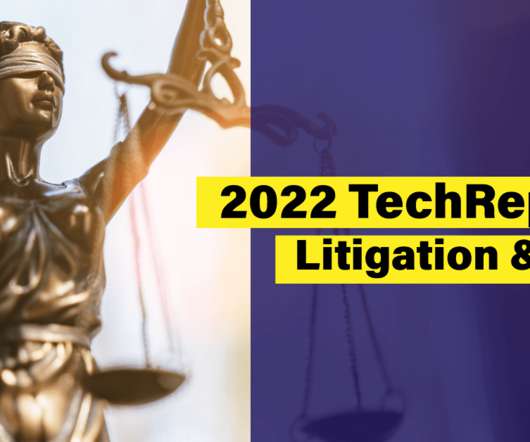TechReport 2022: Litigation & TAR
LawTechnologyToday
DECEMBER 9, 2022
Slowly but surely” may be an apt phrase to describe the results from the 2022 ABA Legal Technology Survey Report covering Litigation Technology & E-Discovery. Software for Litigation & E-Discovery. Every Wednesday, we’ll be posting a new report from one of our experts, so stay tuned!














Let's personalize your content